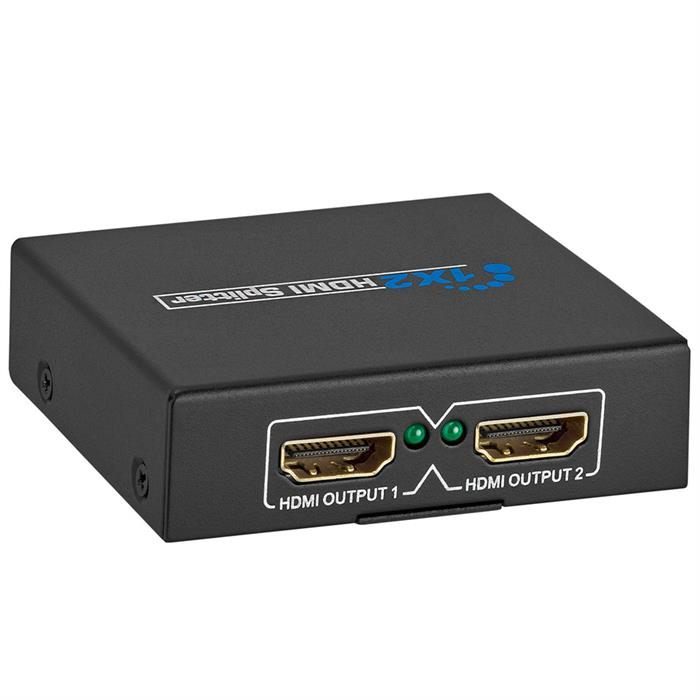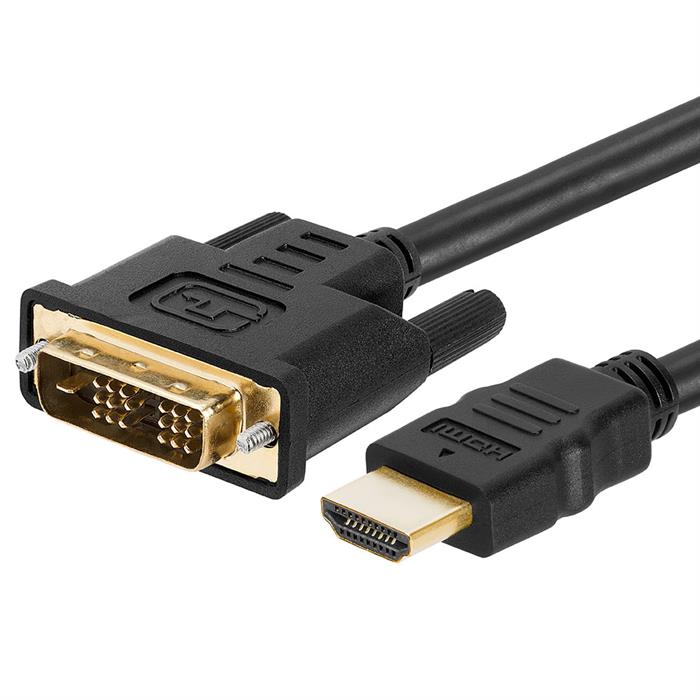HDMI Switches/Splitters
Split Signals and the Impact on Signal Strength
When considering the concept of an HDMI splitter, you should know that the device is literally “splitting” the signal. The more outputs connected to the splitter, the more times that the signal will be divided. As a result, the signal can start to break down after a certain point. This is particularly the case when you are not only splitting the signal into multiple pieces, but when you try to run the signal over a longer distance. The longer the distance you are running the cable, the more of a chance that you will encounter a signal disruption. Also, since when using HDMI-to-DVI cables, you usually split the audio signal separately. This can sometimes stifle the reception because audio signals are often weak and are easily problematic.
Providing Enough Power to Split the Signal
Signal disruptions when splitting a signal over a long distance and into multiple outputs is certainly an avoidable problem. Sometimes the signal just needs a little help being carried along.
the wire. That is why you have the option at Cmple.com to purchase two difference types of splitters – Powered and Non-Powered. If you think that you are encountering signal disruptions when using a splitter, then a Powered Splitter is for you. A Powered Splitter will boost the HDMI signal significantly, making it possible to broadcast your HDMI into multiple displays without any problems. This is particularly true as the separation of the audio and video signals can cause additional signal disruptions, as the weaker audio signals usually require and extra power source in order to be carried on. In addition to making sure that the signal is properly received, Powered HDMI-to-DVI splitters can even increase the strength and clarity of the audio and video.
Setups That Can Use the Splitter
A typical setup that will enable the use of an HDMI-to-DVI splitter is one that has one input, or media source such as a cable box or Blu-Ray player – and multiple outputs such as a high-definition television. Setups as such are seen less in private homes than they are in restaurants and bars. How do you think that it is possible to broadcast the big game on multiple televisions at one? Usually the cable box or other input device enables the use of a DVI connector, which is often incompatible with many high-definition televisions used today. In addition, without a splitter, it would be necessary to have a unique input for each television. This is very inconvenient for many reasons – it is expensive to get individual setups and can take up a lot of space and cause problems with wires. Plus, the setup process would be overwhelmingly confusing. That is why it is prudent to use a HDMI Splitter in this situation. You would be able to use only one input, and the same display would show on each device that you would like it to.
Another situation where you can use an HDMI Splitter in your home is when you have a single input and you don’t want to create another one. For example, say you only have one cable box, but more than one television. Perhaps those televisions are on different floors. Well, if you are using a Powered HDMI Splitter you can transmit the signal to those multiple televisions. You can run wires (perhaps flat HDMI cables) across the floor, down the stairs, or even through the walls. This is a convenient option for some because setting up televisions multiple times can be a strenuous task.
Transferring Audio Signals
Not every HDMI Splitter has the ability to transmit audio signals. Some splitters are only made to split the video signal, and not the audio. Some are the exact opposite, and split just the audio signal, and not the video signal. Also available, are splitters that can split both the audio and video signals. The here problem is that DVI adapters do not carry sound. The true difference between DVI and HDMI signals is not in the video quality (that is relatively the same), it is in the fact that HDMI transmits audio signal and DVI does not. It is possible to exchange audio signals through DVI, but it is rare and expensive. However, there is certain equipment that will allow you to easily transmit the audio signal as well.
Components for Transmitting an Audio Signal
In most cases, when using a splitter you can simply transmit the audio signal because HDMI cables are audio-compatible. However, because DVI cables are not as audio-compatible, there is special equipment necessary to transmit both the video and audio signals. What you need to do is to connect the input (the source of the media) to the output (the television or monitor) via DVI cables. Then, connect the DVI cable to the HDMI output using your HDMI-to-DVI Splitter. Another option is to use a certain video cards in your devices. “AMD” and “nV” video cards contain special pins in them that will support a certain range of audio signal transmission. However, this can be limited, and simply finding these cards can be very difficult and very expensive. Your best bet is to use the DVI-to-HDMI splitter and use the special components to allow for the audio transmission.
Gold-Plated HDMI-to-DVI Connectors
HDMI-to-DVI cables are certainly available in the gold-plated format. Gold plated cables are slightly more expensive, but when you think about the longevity of their use, it can be well worth the investment. Gold-plated cables arguably provide a better video quality than non-plated cables because gold is a superior electrical conductor, but the difference isn’t prominent unless you are running the cable across a long distance. Yet in this case, a gold cable would be a good idea because anything possible to maximize on signal quality when splitting a signal into pieces is a good idea.





